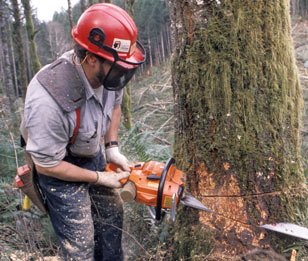Tree Cutting Tips
Sometimes, cutting trees on your property can be the best and only choice to make. You can either hire professionals to do this for you, or you can cut the trees down yourself.
If the tree in your yard ceases to be a beautiful addition and becomes a risk to your safety, it may be time for the tree to be cut down. It is very possible for these trees to pose a threat to your home and your family if they fall down accidentally or get tangled with electricity lines and other such unfortunate situations.
Hiring a Certified Arborist
If you decide to finally cut it down, the next step you have to do is to decide how. One way to do this is to get the service of a certified arborist or a licensed company specializing in tree maintenance. As a rule, you must first determine if the company is licensed, bonded and insured before conducting business with them. It is a must that they have insurance since tree removal and tree cutting does have its risks. Should an accident happen, their insurance will not hold you liable for the accident to the tree cutter. Contact multiple companies offering tree removal services and ask for a free estimate and try to haggle. It is also a good idea to ask for references from them and to do a background check on the company. Also, you can verify with their insurance provider to see if they really are insured. You can cut down the list by using these questions and methods.
DIY Tree Cutting Tips
Another option you can choose is to cut the tree down yourself, although hiring a tree removal professional is still very strongly recommended. The first step to go about cutting a tree is to do research and learn all you need to learn about cutting the tree.
Here are some tree cutting tips should you decide to do the job yourself.
- Avoid cutting and trimming during bad weather such as windy days or rainy ones. This rule applies especially when you use a ladder. When you use a ladder, it doesn’t take much wind to topple it or to sway a branch directly at you.
- Use safety gadgets and gear such as eye protectors and a hard hat.
- Do not cut down or trim the branches if they are located near electrical and utility wires.
- Read the manual of the equipment you have to help you in cutting the tree. If you only rented the equipment, ask the proprietor how to use the tools properly and safely. If you cannot understand how to use them or simply cannot operate the tools, it is best to leave the job for professionals to do.
- When cutting down a tree, you must identify where the tree leans. The lean will influence where the tree will fall and through knowing it, you can also identify where to cut initially or where the notch should be. For example, if the tree is inclined to the right, create the notch from the left. Keep in mind that the notch should only be 80% of the trunk’s diameter and must still allow the tree to fall without breaking the hinge prematurely.
- Clear the area where the tree is leaning. Trees do not always fall where you want them to so it is best to be prepared for all circumstances.
